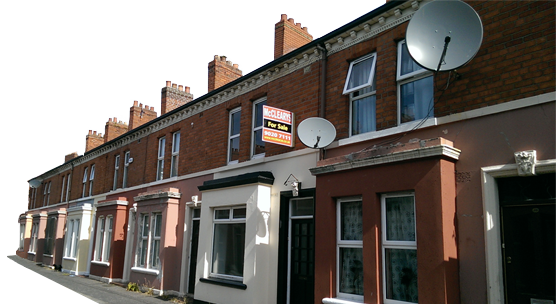Single flat buildings insurance
Freeholder and leaseholder building insurance quotations for single flats in a block
Leaseholder buildings insurance for individual flats and blocks of flats with absent freeholders
As well as insurance for blocks of flats, we also offer buildings insurance for individual flats in a block. But before you buy a policy, you need to be aware of some facts that may affect the decision you make.
Flats block insurance
The majority of blocks of flats are insured by the freeholder of the property or by a management company or residents association. A block insurance policy covering all of the flats is the ideal option to provide insurance cover for the building.
Converted flats insurance for individual flats and blocks
On a smaller scale, there are many flats in converted houses where they may be only two flats. The same principles apply, one insurance policy covering both flats is the best option. The flats should be insured on the same policy so that all parties concerned can be certain that the whole building is insured adequately and can make sure the policy is renewed, paid and kept up to date. Furthermore, if there is a claim affecting two or more flats, there is one excess to pay and one insurer with whom to negotiate. Trying to get two or more insurers to agree on the same repair strategy and contractors can be a challenge.
The consequences of uninsured flats in a block
One potential problem with insuring single flats occurs when there is a claim and other flats are inadequately insured or uninsured.
Let’s imagine a fire in a two storey building substantially damaging the two flats, one on each floor. The ground floor flat has no insurance cover so where does it leave the owners of the property above?
If the flats were extensively damaged then you would not be able to reinstate the upper flat without reinstating the uninsured one. Despite having a valid insurance policy this can leave the owner of the upper flat being unable to rebuild their property.
Financial loss caused by uninsured flats
If there is no way of reinstating the insured property the insurer might eventually pay out the cost to rebuild the individual flat they insure in full settlement of the claim. The problem for the flat owner is that the cost to reinstate the flat (and therefore the claim payment) might be £100,000 but the value of the flat could be £400,000 leaving them with a £300,000 shortfall and nowhere to live.
In an area where the market value is below average you may well find that the market value is actually lower than the cost to reinstate.
Here is an extract from one insurers policy wording relating to claims settlement, the insurer would select which one to pay;-
If any property is damaged by any of the following causes, we will pay you
- for the value of the property at the time it is damaged
- or the amount of the damage,
- or at our option reinstate or replace the property or any part of it.
As you can see, it’s up to the insurer on which option they decide to settle.
Is there anything wrong with insurance for a single flat?
The advice for owners seeking cover for a single flat is to investigate if there is a possibility of covering the whole block first. If this is not possible then cover for a single flat is a perfectly acceptable solution although you are somewhat at the mercy of your neighbours having suitable policies as well. A block of six flats insured on six individual policies should be insured just as comprehensively as it might be on a block of flats insurance policy as long as all of the policies are valid, up to date and paid.




